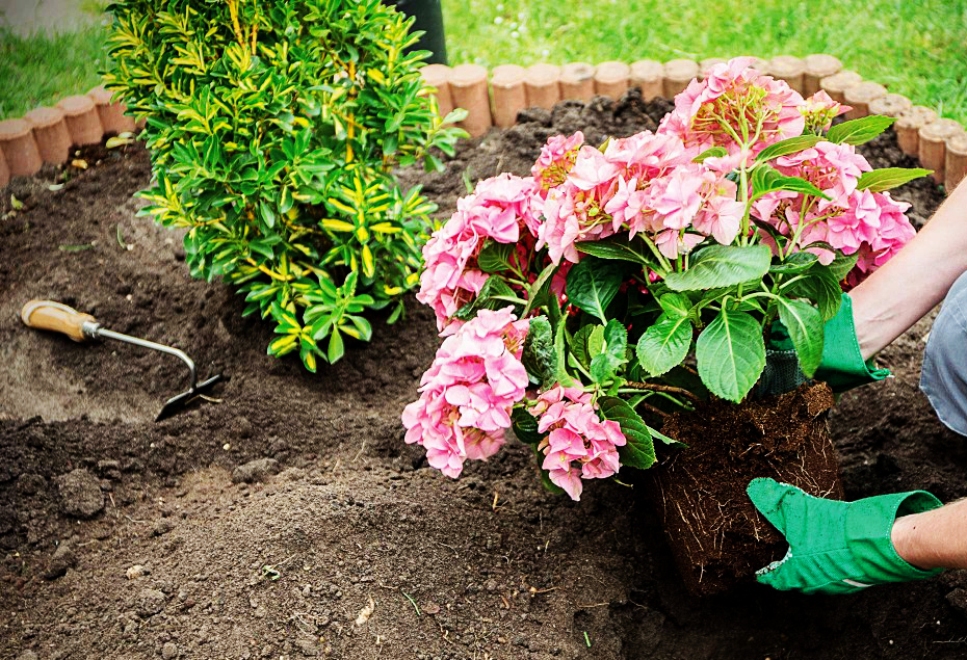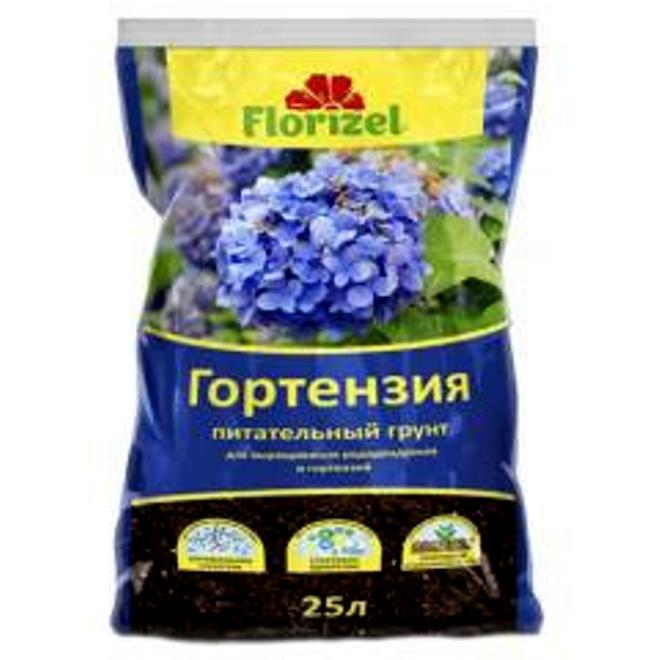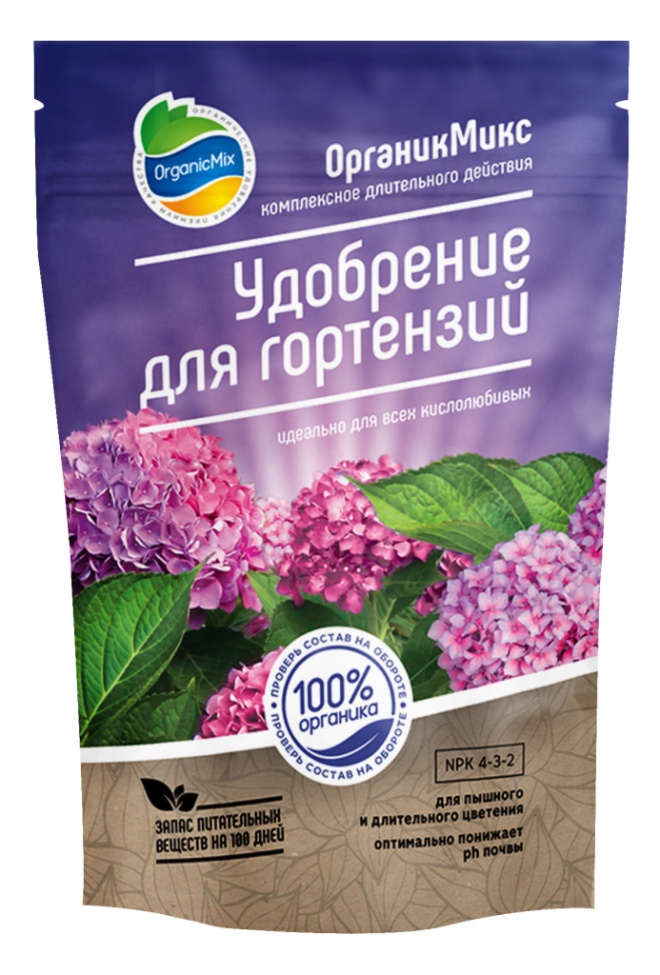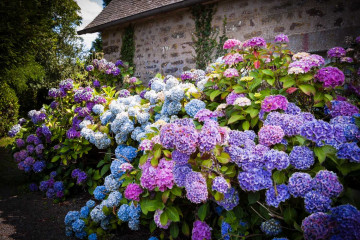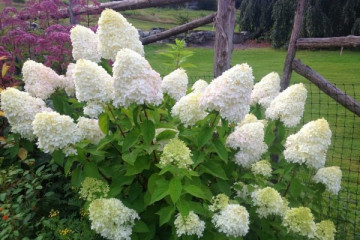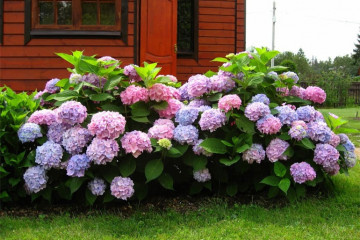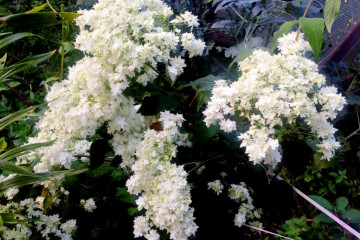What kind of soil does hydrangea like indoor and garden
Content:
For the normal development of the plant, it is important not only to provide proper care, but also to use high-quality soil with all the necessary nutrients for planting. To understand what kind of soil hydrangea loves, you need to carefully study the basics of agricultural technology of this culture. For most varieties, a fairly loose and moist soil with a certain level of acidity is suitable.
What kind of soil does hydrangea like: the main indicators of the soil
Before planting, you need to choose a suitable place and prepare the soil for the hydrangea. He must meet the following criteria:
- be nutritious;
- have sufficient lightness;
- good moisture permeability;
- have a certain acidity.
If the land does not meet all the requirements, the hydrangea will develop poorly or simply die.
In order to correctly read the signals given by the hydrangea, the florist needs to monitor its condition and periodically inspect the bushes.
In order to find out in more detail what soil is needed for hydrangea, you should study all the requirements for it.
Acidity
First of all, for normal growth, it is necessary that the soil has a medium acidic level (pH 5.5). If this figure is too low, the plant will change the color of the leaves. In this case, additional acidification may be required. But, not knowing the acidity that a given soil composition has, it is better to abandon the introduction of lime and other ingredients that affect this indicator.
After carrying out a special test and identifying the problem, it is recommended to use ready-made solutions of organic origin or a homemade acidifier made up of food acids such as citric, malic or acetic acid to normalize the acidity level.
You can prepare an acidic solution by mixing the selected component with water in the proportion: 1 tablespoon of the active ingredient in a bucket of water.
You can measure the acidity level of the soil using a special device that is sold in gardening stores.
Lightweight and breathable
First of all, the soil for the hydrangea should be light enough to allow air access to the plant's roots. For this purpose, chernozem with a high structure density is not suitable.
Humidity
Good water permeability of the soil layer ensures lush flowering of the bush. Hydrangea loves moisture very much and the area where it is planted should not be arid.
To maintain the desired moisture level during the growth of the culture, mulching of the soil is carried out in the perimeter close to the stem. It is recommended to do this immediately after planting in the ground.
Nutritional value
It is equally important that the soil for the hydrangea is nutritious.
To increase the fertility of the soil, mineral and organic compounds are used, created by hand or purchased in specialized stores. Ready fertilizers are good because, in addition to providing normal nutritional value, they are able to regulate the acidity of the soil layer.
How to prepare the soil for hydrangea: soil composition and proportions
Soil requirements vary depending on where the hydrangea will grow. If it is a garden, it will be important to consider light, moisture availability and other factors. Indoor flower is less dependent on the surrounding microclimate. The needs of such plantings for moisture and feeding are much easier to satisfy.
In this regard, ready-made soil for indoor hydrangea can be used. This option will avoid mistakes if there is not enough experience in the manufacture of soil mixture. To create a substrate on your own, you need to know what ingredients and in what ratio you need to mix. You need to prepare the following components:
- well rotted peat;
- leaf mixture or sod;
- coarse sand.
The ratio of the components is influenced by the size and age of the flower - young plants need more humus, older plants need sand.
The bottom of the tank is covered with a drainage layer to prevent moisture stagnation and ensure the removal of excess moisture.
When creating a mixture, most often, two parts of sand and three parts of leaf humus or sod are taken for one part of peat.
You need to warm it up for an hour at 180 degrees or 10 minutes if the oven is heated to 200 degrees Celsius. The disadvantage of this method is that in addition to harmful substances, most of the useful ones are destroyed.
The soil required for garden hydrangea has its own characteristics. It shouldn't contain a lot of organic matter. In addition, watering is carried out with hard water, which is harmful for ornamental plants.
The composition of the soil for growing hydrangeas in the garden should include:
- black soil;
- turf;
- peat;
- decayed foliage;
- coarse sand.
But at the same time, it is not enough to know how to prepare the soil for planting hydrangeas. It is important to take into account a whole range of factors that can affect the development of a plant.
It is required to provide good illumination of the bushes. This will allow it to bloom long and luxuriantly. It is better to plant hydrangea in a place protected from strong winds.
Preparing the soil for planting hydrangeas in the garden
For the soil, equal proportions of the components are taken. Drainage is placed in the hole prepared in advance, and then the soil mixture is poured. The depth of the hole depends on the size of the plant.
Landing is carried out according to the following scheme:
- The site is carefully dug up and then fertilized with self-prepared or purchased compounds. Experts advise using superphosphate.
- Drainage is placed in a hole about forty centimeters deep. The layer thickness is more than five centimeters. It can be small rubble or broken brick.
- Then the fertile soil composition prepared in advance is poured.
- After thorough watering, you need to wait a few days for the soil to compress a little.
- Then the level of acidity of the soil is determined, and, if necessary, measures are taken to optimize it.
At the end, mulching of the root zone is carried out. For this purpose, needles, sawdust or peat are used, for hydrangea it does not matter which one you choose. The main thing is that the plant will receive the necessary nutrients and retain moisture.
What to do to avoid soil problems
You can ensure the normal growth of hydrangea bushes if you follow the rules for caring for the plant. They are as follows:
- Timely feeding. To do this, it is better to use complex compounds containing such important elements as potassium, iron, zinc and others.
- During the flowering period, fertilizing should be carried out twice a month. The exception is too hot days.
- Periodic loosening of the earth around the hydrangea bush. This will allow the roots to receive the oxygen necessary for development.
- Watering after the topsoil dries up.
In the gardens of the middle lane, not all types of plants can take root. This must be taken into account when deciding which soil and growing method for hydrangeas to choose. Because if the variety is not suitable, no amount of nutritious soil will help.
Treelike, paniculate, large-leaved and other varieties have their own growing characteristics and not all of them can survive difficult climatic conditions. Therefore, it is necessary to help the plantings adapt to new conditions, protecting them from heat and severe cold.
The most popular are paniculate varieties. Therefore, for many gardeners it is of interest what kind of soil the panicle hydrangea loves. With normal care, such a bush is able to develop a powerful root system. But even this rather unpretentious flower may not bloom due to illness, improper watering and too alkaline soil. If all these negative factors are excluded, then the flowering will be lush and long.
The soil chosen for planting hydrangeas must meet certain criteria. If they are not taken into account, the plant will be sick and grow poorly. Many gardeners choose a ready-made substrate, depending on what kind of soil the hydrangea cultivar may prefer. But most make it themselves from peat, sand and rotted leaves. If you add the right care, feeding and watering, the plant will thank you with a beautiful and lush flowering.
